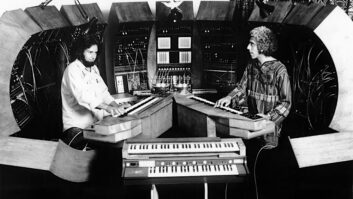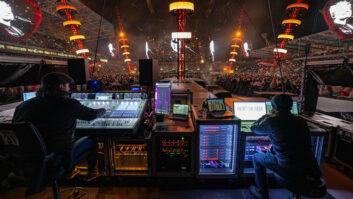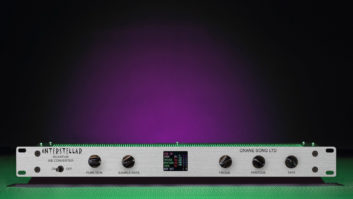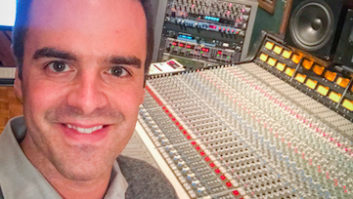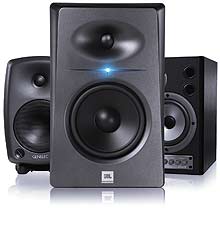
JBL LSR2325P
While grown-up ears come in a fairly predictable range of sizes, monitors span a vast expanse of dimensions. Don’t have the budget or space for a set of wall-sized Augspurger mains? Relax — there are options aplenty with a much more diminutive footprint and price tag.
The popularity of self-powered mini monitors — defined here as units with single woofers smaller than six inches — is consistently growing across the board, especially with producers and operators involved in interactive/gaming audio. Typically, these professionals are creating, mixing and mastering their audio in a wide variety of settings not specifically tailored for sound.
And for those working in multipurpose edit/post suites, temporary setups at a client’s office — or even in hotel rooms — the availability of high-performance, low-profile, affordable monitors is more important than ever. As client approval is frequently being sought in these situations, the playback mechanism has to be able to reach a group sitting in the room, meaning more than a set of headphones is needed. When the sound of sword swishes, cricket footsteps and detonating explosions must be heard by multiple ears outside of a pro studio setting, the small speaker reigns supreme.
In addition, music artists recording in the field or working on preliminary tracks in their personal facilities before heading to the studio have found that powered mini monitors are in the sweet spot for their needs.
The technology under the hood that drives these miniature powerhouses is evolving rapidly. Onboard amplification electronics continue to get smaller, and heat has become less of an issue as designs become increasingly efficient. Genelec helped pioneer onboard amplication in the mid-1980s, and today such packages have become the rule rather than the exception. In addition, digital crossovers are constantly improving, as minimal electronics serve to split the signals between the tweeter and subwoofer with optimal efficiency and accuracy.
Flexibility is also becoming the norm, as manufacturers keep in mind the possibility that these speakers may be constantly moving around. The Yamaha HS50M is one such example, with trim switches that let users custom-tailor low, mid and high-frequency response according to the environment or application. Some form of room response is also available on units from Genelec and Phonic.
Keeping things in sync are a battery of welcome ergonomic touches. For example, the Stereo-Link function on ADAM’s A5 offers the option of controlling the overall system volume from any one speaker’s gain control. In a world where matching the individual speakers would be difficult and time-consuming, such features are both acoustically beneficial and convenient. In a nod to the desktop user, many systems also have a front-mounted volume control.
If your world calls for little more than a computer, an interface and a quality pair of speakers, the following chart should point you in the right direction. They may be “fun size,” but today’s mini monitors are strictly business.

